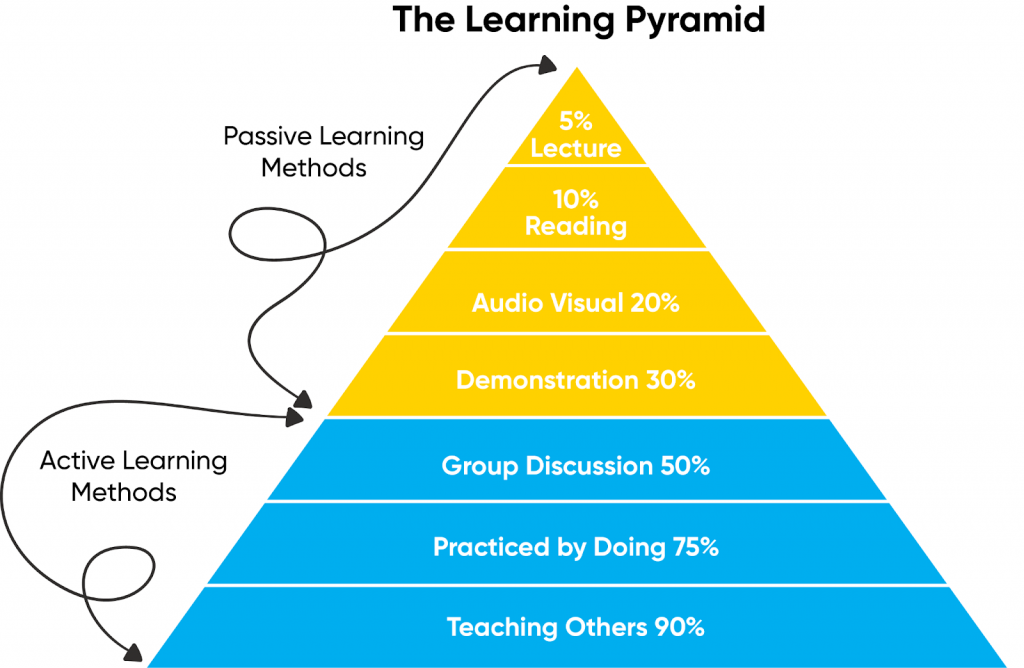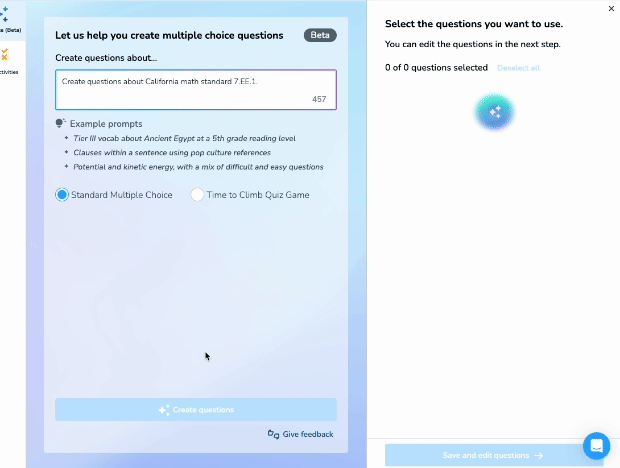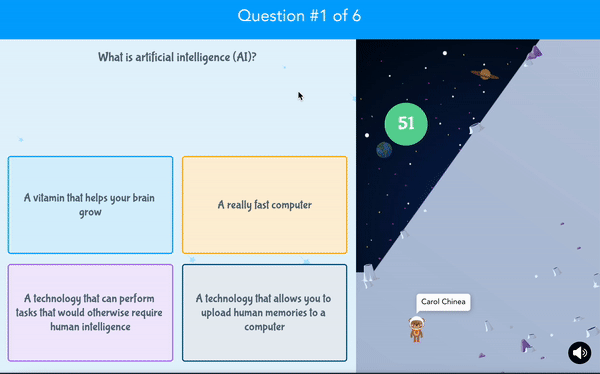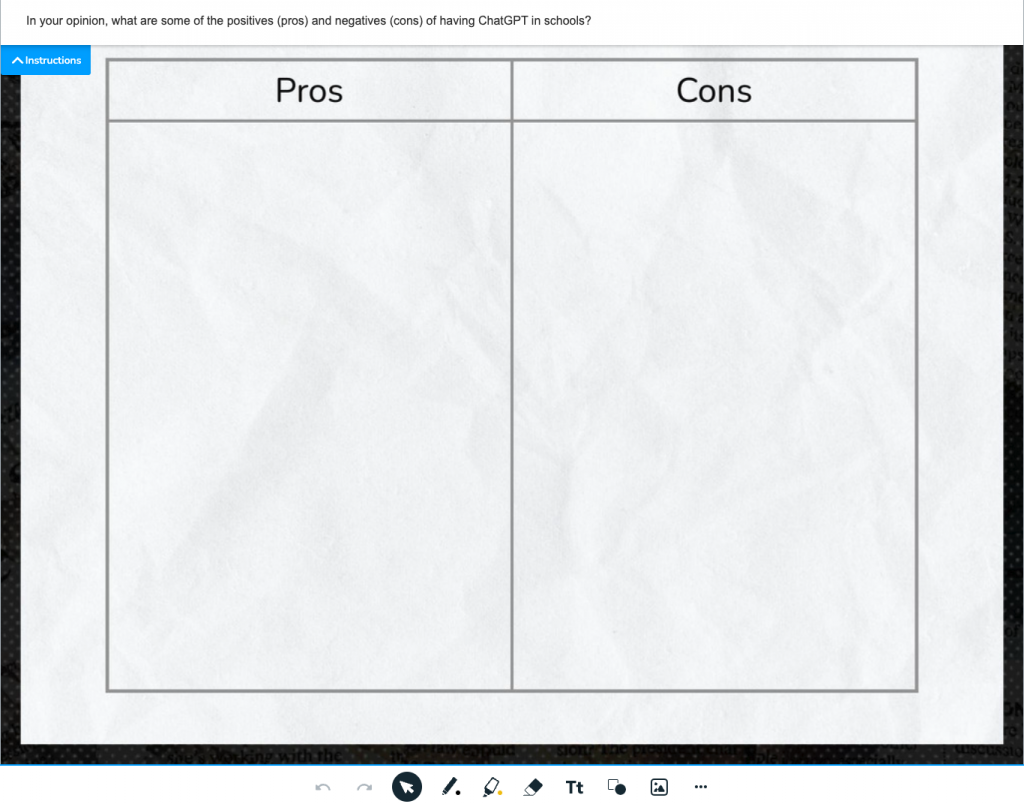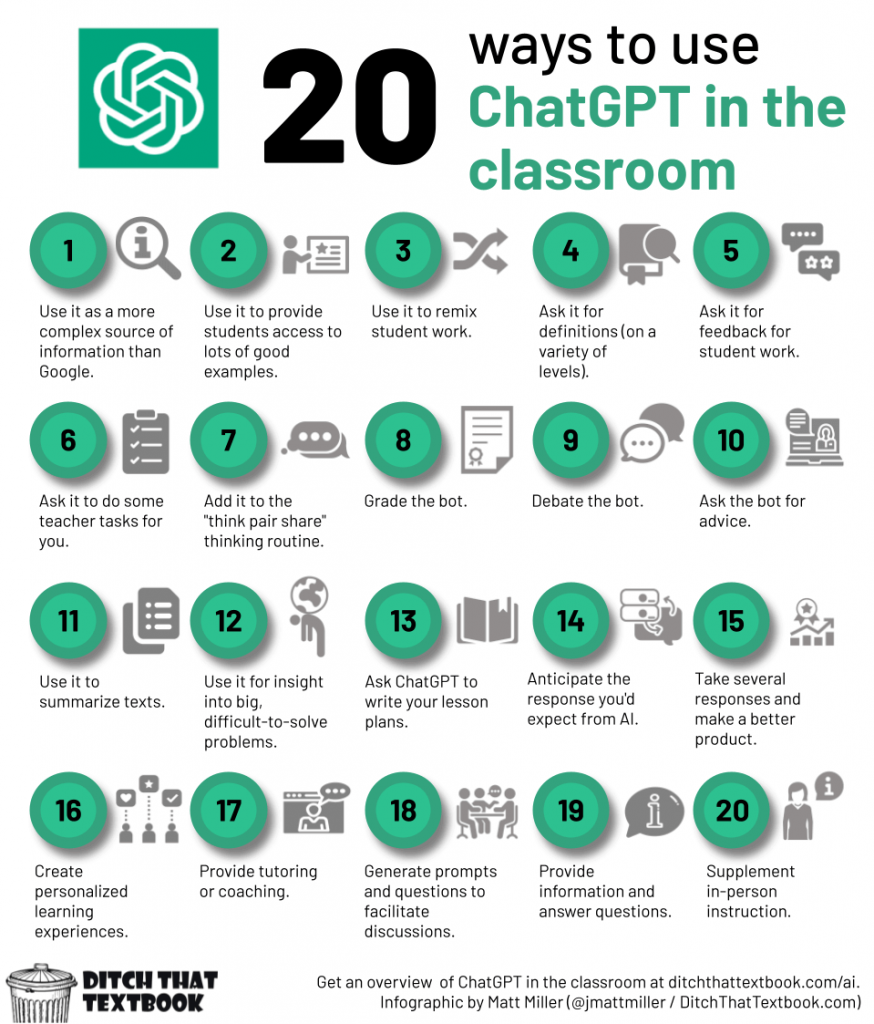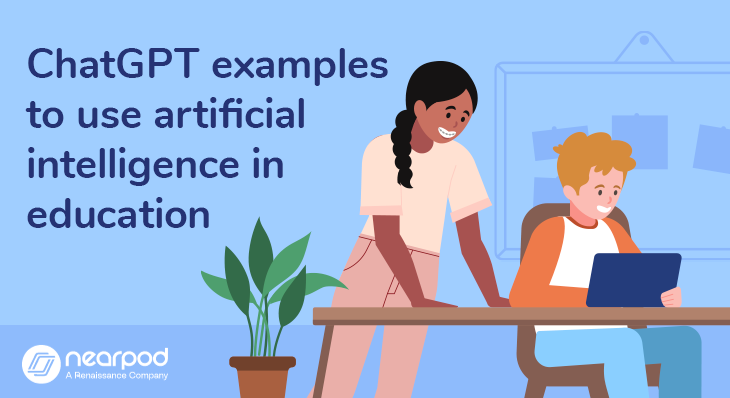
ChatGPT and artificial intelligence (AI) in education examples for teachers
Over the past year, you’ve probably heard murmurings about ChatGPT, whether in praise of artificial intelligence (AI) in education or in fear of this burgeoning technology. It’s a worthy debate and requires some serious conversation not only about the ethics but the equity of such technology. What is ChatGPT, and what role does it play in education? Let’s start with some of the basics and ChatGPT examples.
New to Nearpod? Make sure you’re signed up to access these digital citizenship activities and lessons! Teachers can sign up for free below to access and create interactive lessons. Administrators can schedule a call with an expert to unlock the full power of Nearpod for schools and districts.
What is ChatGPT?
In November 2022, OpenAI developed and made available an advanced chatbot, which is a natural language processing tool that uses artificial intelligence to provide human-like conversations and high-quality content. However, this chatbot was unlike its predecessors. The “GPT” stands for generative pre-trained transformer. ChatGPT uses both supervised learning as well as reinforcement learning.
While generative AI focuses on generating output based on data gathered from a wide array of information available on the internet, it is the RLHF, or Reinforcement Learning from Human Feedback, that adds the human-like component since human AI trainers modeled conversations of both the user and the AI assistants. Based on OpenAI’s GPT-3.5 and GPT-4 language models, you can question ChatGPT to provide an answer, or complete specific tasks like generating content, say an essay or code. ChatGPT is free to the public since OpenAI is still in the phase of collecting research and feedback on this tool, and there is a paid subscription model currently available, ChatGPT Plus.
Why are people worried about AI models?
With any new technology, people tend to worry. It’s often a fear of the unknown. In the early 1900s, actress Mary Pickford stated, “Adding sound to movies would be like putting lipstick on the Venus de Milo.” In 1984, Columbia University Teachers College Research questioned the role of computers in education, insinuating that computers were “bad.” Technology is changing at such a rapid pace that it can be hard to know what is the latest and greatest.
Richard Kurzweil’s Law of Accelerating Returns theorizes that the rate of change is exponential—instead of 100 years of progress in the 21st century, we probably will experience 20,000 years of progress. With ChatGPT being able to create content, the old fear of humans being replaced by robots has resurfaced. Some fear that their jobs will be replaced by artificial intelligence education. Others fear human intelligence may suffer since users can “cheat” to have answers provided or essays written for them. Plus, since ChatGPT does not provide sources, there’s the threat of spreading misinformation. ChatGPT does not ask clarifying questions, so the AI-powered tool can provide content whose words may be in the right order and therefore be “plausible-sounding” but actually lack meaning, resulting in nonsensical or inaccurate text.
“My responses are not intended to be taken as fact, and I always encourage people to verify any information they receive from me or any other source.”
ChatGPT (ZDNET)
Additionally, ChatGPT relies on internet-based information up to 2021, so it’s not the most up-to-date in today’s real-time data world. And since Chat GPT is one of the fastest-growing apps of all time, hitting 100 million in two months (for comparison, TikTik took nine months to accomplish the same feat), many, young and old, are concerned over the lack of oversight or protocol. As with all technology, will it be used as the creators intended?
What are examples of artificial intelligence in education?
As with tech in general, there is so much potential with new tools. ChatGPT helps generate solutions to problems, answers to questions, and suggestions to inquiries. In our always-on world, there’s instant gratification in having information at your fingertips in real time, which optimizes efficiency, whether professionally or personally. Since Chat GPT culls the vast internet, it provides different perspectives, various points of view, and original ways to digest information, factual or subjective.
What does AI technology, such as ChatGPT, mean for teachers and schools?
Quite simply? It’s to be determined! Many schools and universities have proactively banned ChatGPT, while others cry that it’s too reactive of a move. While cheating is always a concern in education, ChatGPT will continue to force us educators to think about our means of assessment. If AI can answer a question, is that the right question we should ask our students? Think back to the initial concerns over calculators in children’s hands—seems almost laughable now, right?
AI is reshaping the education landscape, with AI developers creating tools like large language models that assist in performing tasks. While AI doesn’t replicate the complexity of the human brain, its ability to efficiently manage routine tasks impacts the learning experience for both students and teachers.
If you haven’t already, do listen to Sir Ken Robinson’s TED Talk on changing education paradigms.
How teachers can use artificial intelligence in education
1. Combine AI ChatGPT with pedagogy
Similar to when the internet became more widely used in schools, teachers shifted away from students memorizing information—since they could Google to find factual answers—and instead focus more on the application of such learned knowledge. Teachers’ roles shifted from being importers (or, some say, gatekeepers) of information to facilitators or guides. ChatGPT will encourage educators to continue focusing on those higher-order thinking skills of Bloom’s Taxonomy. Instead of the A, B, Cs, and 1, 2, 3s, P21’s Frameworks for 21st Century Learning touts that today’s classrooms must focus on skill sets based on the 4 Cs: creativity, collaboration, communication, and critical thinking.
Although not research-based, the Learning Pyramid illustrates the levels of knowledge retention, with “teaching others” as the most active and most effective method. So instead of having students write a persuasive essay on a topic, how might they use ChatGPT to craft? And then, how might they use their critical-thinking skills to analyze the construct of the AI ChatGPT-generated argument and craft feedback as a teacher would?
2. Administrative work and instructional planning
ChatGPT has a practicability that’s hard to dispute. For example:
- In terms of efficiency, it aids teachers in many administrative tasks such as writing emails, developing instruction, generating examples of solutions, crafting a poster, or providing word problems.
- It can streamline instructional planning, whether outlining a unit, crafting formative assessment questions, curating slides on a topic, forming rubrics, or generating discussion questions. Teachers can still put their artist’s mark on these materials and their methodologies, but they won’t have to “recreate the wheel” as often.
- Students can create flashcards with questions and answers, generate practice quizzes, ask for summaries, and even debate with the chatbot to understand various points of view. Companies like Quizlet and Duolingo have already integrated the chatbot into their apps.
3. Leverage AI Create for effective instruction
In addition to these tools, Nearpod’s AI Create offers educators a seamless way to integrate AI into their teaching practices. Designed to save time lesson planning, AI Create empowers teachers to develop creative and effective formative assessments in just a few clicks.
This tool allows educators to input clear, concise prompts to generate tailored content such as quizzes or Time to Climb activities aligned with specific learning objectives. For instance, a teacher could ask AI Create to “Generate a vocabulary quiz for 5th-grade students using synonyms and antonyms” or “Create discussion questions about the causes of the American Revolution.” By focusing on real-time student engagement, the tool aligns with Nearpod’s broader mission to center teachers in the transformative potential of AI in education. Whether crafting formative assessments or designing interactive activities, tools like this ensure AI serves as a co-pilot, not a replacement, for teacher-led innovation.
4. Ask the right questions
Part and parcel of critical thinking is being able to ask well-formulated and carefully constructed questions. As Albert Einstein said, “It is not the answer that enlightens, but the question.” Such an art goes beyond the 5 Ws (who, what, when, where, and why). Good questioning is a practice for organizing thinking about what one doesn’t know. Questioning speaks to curiosity, a hallmark of a lifelong learner. With technology like ChatGPT, today’s students will learn how to craft the right questions to spark their own quest for exploration and discovery. This is why artificial intelligence activities for students and learning how can ChatGPT be used in education are so valuable in educational institutions. Questioning also requires empathy, and in asking questions, we improve our emotional intelligence, which then begs more questioning.
Use the lessons and examples of artificial intelligence in teaching and learning:
- Nearpod and Common Sense Education’s AI lesson series: Nearpod’s 21st Century Readiness Program includes digital citizenship in partnership with Common Sense Education which addresses how AI systems work, its impact, and how to navigate it responsibly. We’re offering an inside look at the lessons in our program! Check out the What is AI? lesson for grades 6-12 to teach students how artificial intelligence works and consider its potential benefits and drawbacks.
- ChatGPT & the Rise of AI-Generated Content (Grades 6-12): In this Current Events lesson, students learn about recently released AI tools such as ChatGPT. They learn about AI and discuss the possible impacts of these tools on schools and society.
- Artificial Intelligence (Grades 6-12): In this 6-12 technology activity, students demonstrate their understanding of artificial intelligence concepts using Nearpod’s interactive game quiz, Time to Climb.
- The Future of Artificial Intelligence (Grades 9 – Higher Ed): In this Interactive Video from Crash Course, students learn about the future of artificial intelligence.
- AI in Schools (Grades 6- 12): In this Current Events lesson, students learn about the use of generative artificial intelligence (AI) in education. They explain how some schools have embraced generative AI and assess ethical concerns around the use of AI in classrooms.
- How Will AI Change the World? (Grades 6-Higher Ed): In this video, students are introduced to data types and variables in programming.
5. Personalized learning
Probably one of the most intriguing aspects of ChatGPT examples to explore will be how it can help personalize learning for individual students. ChatGPT can create content with constraints or specifics in mind, whether it’s differences in learning styles, abilities, or even language. Imagine asking for a summary of the March on Washington in only images, a breakdown of the laws of gravity for a first grader, varied explanations for the causes of World War I, or the steps to solving an algebra problem in Korean. The ease of differentiation of content comes from asking a question. For both the teacher who needs to personalize lesson plans and the student who needs to personalize studying strategies, ChatGPT could be a game changer.
Start exploring artificial intelligence in education
Change is hard. There will be bumps in the road, as with any learning process. While in its infancy (and ergo nascent on accuracy), OpenAI and others have already released text detectors to identify what content was written by a human versus an AI-written source. Such transparency will be helpful in understanding potential risks and pitfalls in using said content. With such advancements, we must keep ethics, integrity, access, and equity top of mind. As educators, consider how you may need to rethink the learning goals for your students and redesign your instructional strategies. Consider how to make your students co-pilots in learning about this new technology to advance learning and be clear on your expectations with them. And keep asking questions!
New to Nearpod? Make sure you’re signed up to access these digital citizenship activities and lessons! Teachers can sign up for free below to access and create interactive lessons. Administrators can schedule a call with an expert to unlock the full power of Nearpod for schools and districts.

Darri Stephens is a dedicated LX (learning experience) designer, passionate about creating quality content and programs for kids, families, and educators. With MAs in Education from both Harvard and Stanford, and work experience at best-in-class ed tech organizations including Wonder Workshop, Nickelodeon, and Common Sense Education, she is steeped in the design thinking process and committed to agile and iterative project management, which has resulted in multi-award-winning programs and products.

